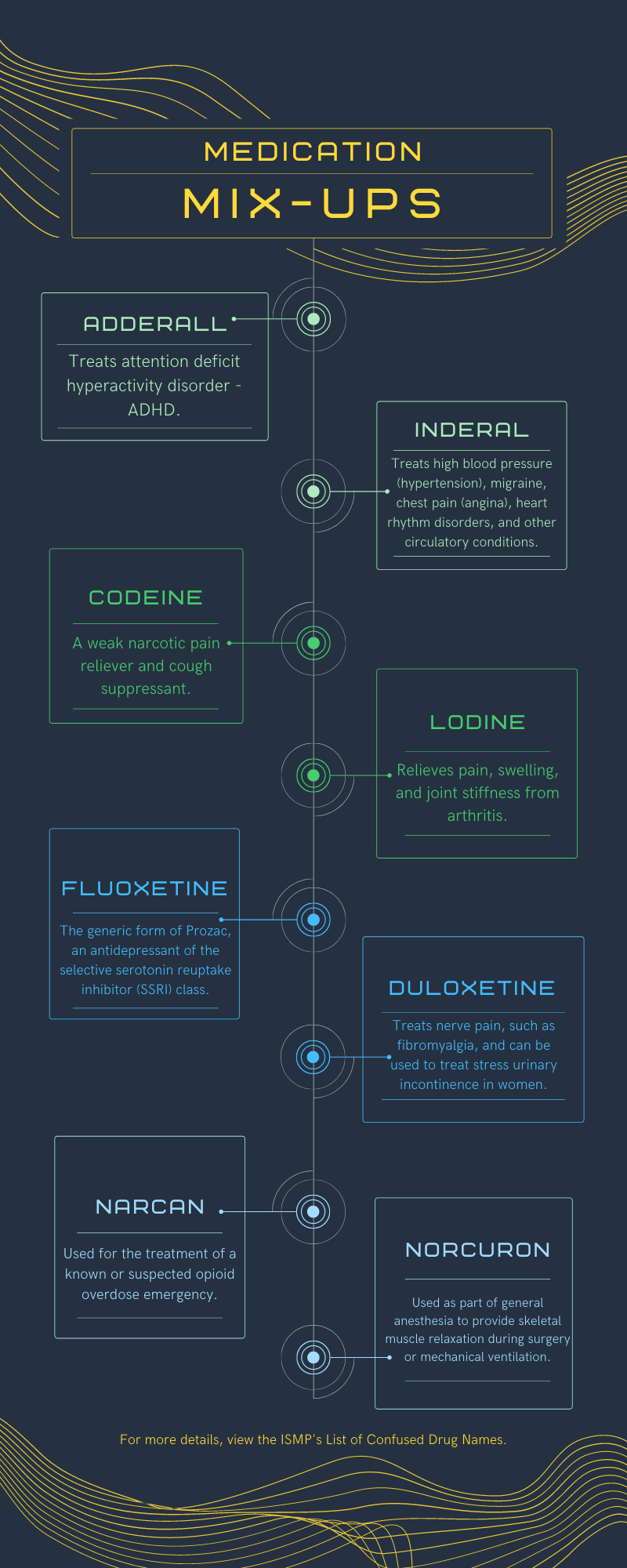There are so many medications on the market that it seems impossible that new names could still be created and new designs of pills could still be implemented. Yet, most of the time, drug manufacturers are quite successful at coming up with a new name and design for their medications. However, these safeguards are only so effective. Many medications still get confused with each other. Below, we discuss the drugs that often get mixed up and what you can do to protect yourself.
Medications That Often Get Mixed Up
The Institution for Safe Medication Practices (ISMP) has created a list of look-alike and sound-alike drugs in an effort to help people avoid mix-ups and minimize harm. Some of these common mix-ups include the following:

- Adderall and inderal: Adderall treats attention deficit hyperactivity disorder (ADHD) while inderal treats high blood pressure (hypertension), migraine, chest pain (angina), heart rhythm disorders, and other circulatory conditions.
- Codeine and lodine: Codeine is a weak narcotic pain reliever and cough suppressant, while lodine relieves pain, swelling, and joint stiffness from arthritis.
- Fluoxetine and duloxetine: Flouxetine is the generic form of Prozac, an antidepressant of the selective serotonin reuptake inhibitor (SSRI) class, while duloxetine treats nerve pain, such as fibromyalgia, and can be used to treat stress urinary incontinence in women.
- Narcan and norcuron: Narcan is used for the treatment of a known or suspected opioid overdose emergency, while norcuron is used as part of general anesthesia to provide skeletal muscle relaxation during surgery or mechanical ventilation.
For more details, view the ISMP's List of Confused Drug Names.
How to Prevent Medication Mix-Ups
In addition to medication mix-ups by name, mix-ups by dosage are also frequent and dangerous. A common example is a 10mg medication mistakenly being filled with 100mg tablets instead. While prescribers and pharmacists are responsible for ensuring the correct type and dosage of medication, there are additional steps you can take to protect your health, including:
- Make a list of all current medications, including their names (brand name and generic), their dosage, and their effects. Leave a copy at home and carry a copy with you for medical visits.
- Never take more medication than prescribed.
- Use a pill organizer to ensure you take the correct medications on the correct days.
- Make sure your physicians and pharmacists are aware of your current medication regimen, and alert them to any changes in this regimen as soon as possible.
If you or someone you love has been harmed by a medication error, our Sacramento personal injury attorneys are here to help. We understand the potentially devastating consequences of a medication error, and we want to help you seek justice.
Call Kershaw Talley Barlow at (916) 520-6639 to schedule a free consultation.

